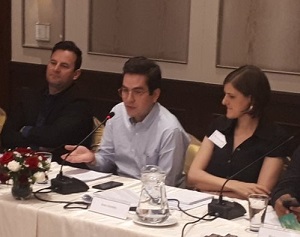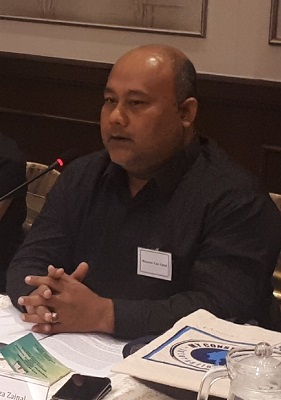Session 4: Inclusion of combatants
.
This theme examined the specific complexities and concerns raised by the possible inclusion of combatants and ex-combatants in constitution-building processes.

Machado Ramirez (Colombia) and Anna Dziedzic (CTN
Many constitution-building processes take place in the wake of conflict, in circumstances where non-state actors have been active often for a considerable period of time. Furthermore, constitutional negotiations often already happen when the parties to the conflict negotiate a ceasefire or a comprehensive peace agreement. The inclusion of combatants in constitutional negotiations raises distinctive issues, which this session explored by examining a number of specific cases where constitution-building took place in the context of ongoing peacebuilding.

Four case studies were presented from Afghanistan, Indonesia (Aceh), Colombia and PNG (Autonomous Region of Bougainville). They explored the following questions:
- Was consideration given to the inclusion of combatants? Who was included? With what consequences?
- At what point(s) in the process were combatants included? What difficulties, if any, arose?
- Were (some) categories of combatants excluded? Why? With what consequences?
- Did (some) categories of combatants exclude themselves from the process? Why? With what consequences?
- Was there opposition to the inclusion of combatants? From whom, and on what grounds?
- What arrangements, if any, were made for amnesty or immunity in association with the inclusion of combatants?

Shamshad Pasarlay (Afghanistan)
- What lessons might be drawn from your experience for constitution building in countries in similar circumstances elsewhere?
Case studies: